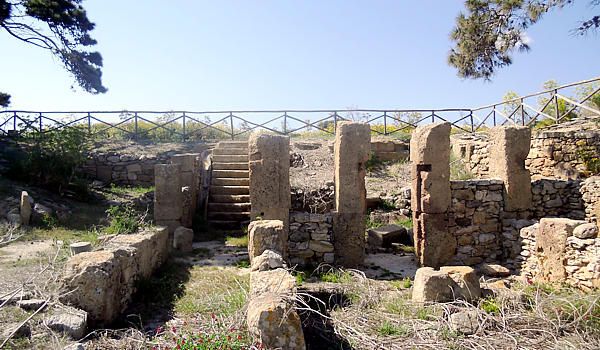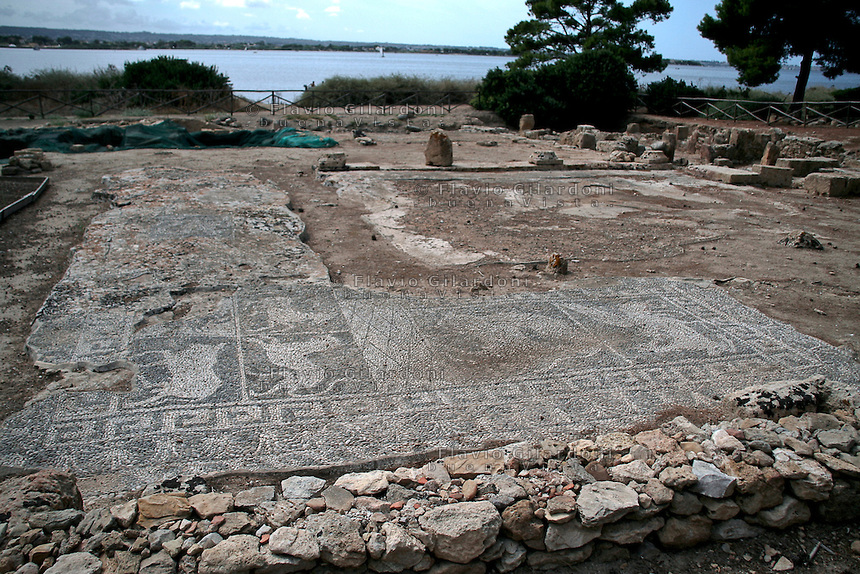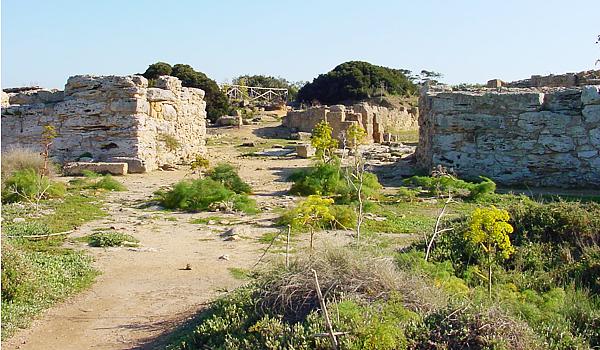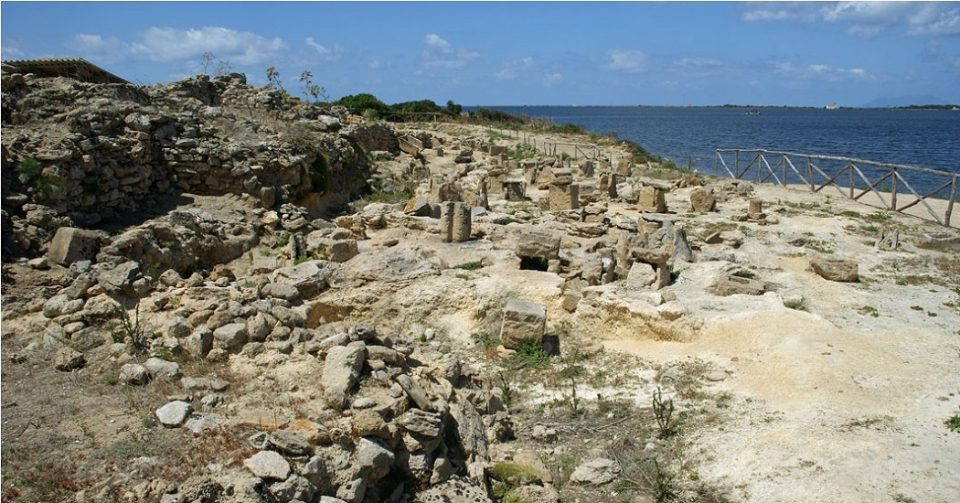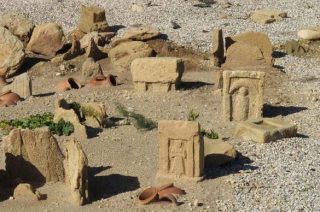Foundation of Motya (Mozia or also Mothia)
The phoenician town of Motya was situated on a small island in a lagoon in the most western part of Sicily, the Stagnone of Marsala Lagoon. The island named San Pantaleo is about two kilometers long and wide, and measures about 45 hectare. Currently is it possible to reach Motya only by boat.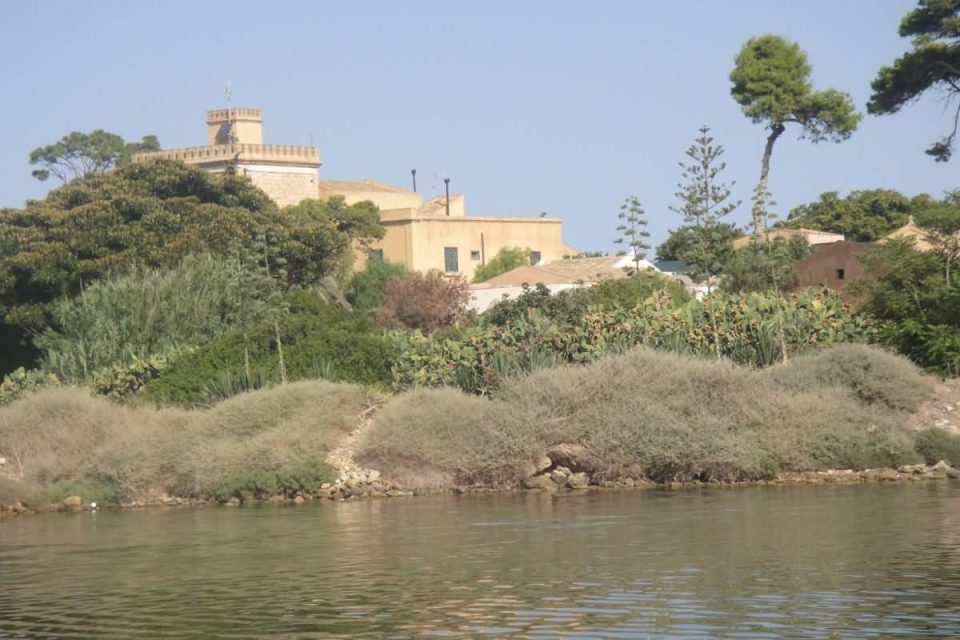
A legend attributes the foundation of Motya to the mythical Hercules. Very probably Phoenicians were the founders of Motya’s colony. Its name in the Semitic language means “filanda” (a textile factory). Phoenicians had likely implanted a wool weaving factory in the island.
The foundation of Mozia (Motya) dates back to the middle of the eighth century BC, some decades after foundation of Carthage.
Some Phoenician merchants heading to the Iberian peninsula discovered the lagoon of the Stagnone. At the time “Longa Island” was attached to the mainland and this made the place well protected, ideal for a trading station.
In the meantime Greek colonization began in Sicily, which came to slow the phoenix business. Phoenicians slowly were forced to retire on western Sicily, so Mozia increased its importance. He grew up and became a small town. Carthage decided to provide Motya of fortifications to defend it from the Greeks attacks. The sturdy set of walls still today are visible in some places.
Dionysus the Elder, Syracuse tyrant
Mozia was in the middle of the long conflict between Carthaginians and Greeks in Sicily that ended in favor of the Greeks for the intervention of Dionysus the Elder, Syracuse tyrant.
As Dionysius the Elder became tyrant of Syracuse he attemped to drive Carthaginians entirely out of Sicily, and to unify all the island under his power.
After killing all Carthaginians living in the eastern Sicily greek cities, in 397 BC Dionysius the Elder’s troops and fleet reached Mozia. Despite the mighty forces, conquest was not easy. Mozia inhabitants had destroyed the little road bonding the mainland to the islet. And the Syracuse ships could not enter the lagoon because of its low backdrops.
Dionysius left to his brother the task of reconstructing the road as he moved away to destroy the nearby Elimo-Punic cities.
In the meantime, Carthage had managed to equip a fleet that left to Mozia under General Imilcone’s command.
The naval battle between Carthaginians and Syracusans
Charthaginian fleet had a tough fight with Siracusans. At the beginning Carthaginians seemed to win, besieging the Syracusans inside the lagoon. But Syracusans defended themselves, thanks to the use of the catapults throwing bullets up to 300 meters. So Carthaginian ships left. Actually they waited for the enemy immediately off the Stagnone, to surprice them.
Dionysius had a brilliant idea. He ordered to make a wooden roller bridge through which Syracusans carried the ships from the lagoon of the Stagnone to the open sea. His intent was to capture Carthaginian ships by surprise at their back. But meanwhile, Imilcone and his fleet had fled.
For Dionysius then it was easy to besiege the city. He gave Mozia to the flames and exterminated its population.
The following year Carthaginians regained Motya, but it lost its importance as a result of the foundation of Lilibeo. After the battle of the Egadi Islands in 241 BC the whole Sicily passed under Roman rule, with the exception of Syracuse. Mozia was almost completely abandoned. There are only a few traces of new houses, usually single Hellenistic or Roman villas.
Medieval and modern age
In the eleventh century, Normans donated the island to “Santa Maria della Grotta Abbey” in Marsala. Basilian monks of Palermo settled there. They named the island “San Pantaleo”, dedicating it to the saint founder of their order.
In the second half of the 16th century the island passed to the Jesuits.
The first identification of the island with the ancient Mozia dates back to the traveler and German scholar Filippo Cluverio in the 17th century.
In 1792 Baron of Mothia got the island as a feud. The first archaeological excavations began under his patronage.
In 1806 it passed to small owners who cultivated it mainly to vineyards, a good cultivation still today.
Archaeological excavations
So far archaeological excavations have brought us back a few remnants of the inhabited area. The town should have long roads crossing at right angles, forming a pattern of pathways. A main artery connected Porta Nord (North Door) to Porta Sud (South Door). In the central section, they found the “House of Amphora“, so called for the presence of numerous empty amphora in a warehouse.
Near Porta Sud there are the ruins of a small military district, the “Casermetta” (small Barrack).
On the east side, near the museum, there are the remains of a building, the House of Mosaics.
Of this building a part of the mosaics decorating the porch and some column bases remained up to us. They are made with white and black pebbles and depict a lion holding a bull, a winged griffin pursuing a deer, a lion and a deer.
The Cothon
On the south side of the island, near Porta Sud, there is an artificial cove, the Cothon.
This is a rectangular basin of about 50×40 meters, with a flat bottom excavated in the rock. It is possible to access it through a channel in which Phoenicians practiced a boat keel-shaped opening. Probably they used Cothon to shelter the small boats that loaded and unloaded goods from the Phoenician ships, moored in the Stagnone lagoon.
The K area
The industrial zone was located in the northern part of the island, the so-called K area, in a suburban location out of the residential area. Precisely at north of the Cappiddazzu sanctuary and at south of the archaic necropolis. Here were the industrial plants, for ceramics, for tanning leather or dyeing fabrics.
They also would make metal processing in a building in the eastern part of the K area which was provided with a rectangular stone bathtub.
The walls
Around the middle of the 6th century BC inhabitants equipped Mozia with a rugged wall circle surrounding the city for 2.5 km. Rectangular towers at a regular distance of about 21m from each other consolidated the walls.
Some of these towers are still visible along the north side and near the necropolis. The walls were restored and fortified several times between the 6th and the 5th centuries, until in some parts the thickness reached 5 meters.
Large semicircular burials of Egyptian origin crowned the high part of the walls and towers. Large stone drips drained rainwater outside the city.
Along the walls there were small hidden gateway and guard stations.
The walls, similar to those in Erice, consisted of overlapping stone blocks, bigger outside and smaller inside.
Doors
Porta Nord (north gate) was the best fortified of the two main gates of Mozia. Along the two-lane paved road, after a large space bordered by two side towers, there were three double door systems, supported by the same central pylon. If the attackers were able to break through the first door, they would have found two more doors to stop their access to the city. The sculptural group preserved inside the museum surmounted the first door. It depicts a bull laced by two lions and recalls the famous door of the Mycenae lions.
Outside the bastions of Porta Nord you can see the remains of two religious complexes from the 6th century BC. The road opening at Porta Nord continued to the sea, connecting the island to the mainland, at Birgi coast.
The paved road was about eight inches over the surface of the water. Today water covers this paved road, but until a few years ago was easy to see wagons carrying the grapes produced on the island to the mainland.
Mozia culture
Mozia culture was open also to the Greek world. For this reason most of the objects found in the necropolis of Mozia and Birgi are imported and come from both Egypt and Greece. Imported items, for example, are the attic and Corinthian vases found in the necropolis and in the island tophet.
There is also a Phoenician-Cypriot statue from the 6th century BC, made of sandstone tufa, with Egyptian influences. It reproduces perhaps a priest. It was in the waters of the Stagnone lagoon and now the Archaeological Museum of Marsala keeps it. The famous youth of Mozia is an imported object as well.
Mozia inhabitants were merchants and lovers of the beauty so the island treasured an important quantity of artistic expression, often from populations with which it traded.
The excavations at Mozia have brought to light numerous finds. These exhibit affinity with the finds of other Phoenician sites such as Sidon and Carthage, but they are very much affected by Greek influence.
Two Necropolis of Motya
Much of the archaeological material was found in the two necropolis of Mozia: the oldest necropolis from the VIII-VI century BC, is in the northwestern part of the island. The second necropolis, VI-V century BC, is at the mainland, along the Birgi coast.
The ancient necropolis preserves tomb stones and urns containing the ashes of the dead. In fact, they cremated deceased and put the remains of the incineration in an urn, along with the funeral kit, made up of vessels and clothing and personal items. A stone was placed on the urn.
In the Birgi necropolis they found several tombs of about 1.5 to 2 meters with the shape of a parallelepiped. Following contacts with the Greek civilization, Mozia inhabitants began practicing the rite of the burial.
The area called Cappiddazzu
Between the ancient necropolis and Porta Nord there is Cappiddazzu. The wide area is a complex of buildings of various epochs, in square stone blocks. The area likely had a religious function.
The Tophet
On the west side of the coast, near the necropolis, there is the sacred area of Tophet, the sanctuary where inhabitants performed the sacrifices of the firstborn males.
In this area they preserved the cinerary vessels containing the remains of human sacrifices offered to gods. Even today there are some votive steles in memory of consumed sacrifice.
Phoenician shrines did not have the majesty of the Greek ones. They were open air structures to which only priests had access.
Custom of the children’s sacrifices lasted until the 4th century, even after the destruction of Mozia by Dionysius.
The sanctuary was in honour of Baal Hammon, which was therefore the most venerated god of Mozia.
source:
Motya, storia arte natura by Nino Sammartano, Lina Novara, Vito Sammartano la medusa edizioni
wikipedia
www.marsalaturismo.com
